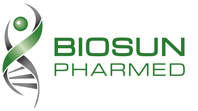Prevention
Prevention
Vaccination is way to prevent many dangerous and costly infectious diseases at a very low cost. Vaccines are made of weakened or inactive bacteria or viruses or some of them (such as purified superficial antigens or toxoids). When vaccine is injected, the immune system produces antibodies against pathogens and immunes the human body against them. After supplying safe drinking water, vaccination has had the greatest impact on reducing mortality (especially child mortality) and increasing population growth. Today, all children (including Iran) are vaccinated against diseases such as: tuberculosis, hepatitis B, polio, diphtheria, tetanus, pertussis, haemophilus influenzae type B, measles, rubella and mumps. No polio case has been reported in Iran since 15 years ago. Neonatal tetanus has been eliminated and diphtheria, pertussis, measles, rubella and mumps are controlled. The incidence of chronic hepatitis carriers [which was more than 3% in 2002] has been reduced to less than 2%.
Pentavalent vaccine
The Pentavalent vaccine protects children against five types of life-threatening diseases: diphtheria, tetanus, pertussis, hepatitis B and haemophilus influenzae type B. Prior to the introduction of Pentavalent vaccine into Iran’s public vaccination program, diphtheria, tetanus, pertussis and hepatitis B vaccines were included in the routine national immunization program and were injected at 2, 4, and 6 months of age. However, the haemophilus influenzae type B vaccine was not injected. By introduction of Pentavalent vaccine into Iran’s public vaccination program, only one injection is given at 2, 4 and 6 months of age. Thus, addition of a new vaccine and, yet, reducing the number of injections has made vaccination program more inclusive.
Cervical cancer vaccine
According to the latest statistics in Iran, cancer is the third leading cause of death (9.4%), after cardiovascular diseases (33.4%), accidents, poisoning and suicide (13.4%) with about 100,000 new cancer cases each year. Cancer research plays a key role in national cancer control planning. Considering the high cost of cancer treatment at advanced disease stages, investing in cancer research is economically more efficient.
Cervical cancer, which caused by human papillomavirus (HPV), is the second most common cancer in women worldwide and the fourth leading cause of cancer death among women. In 2006, vaccine against HPV was introduced and approved by the World Health Organization and it has been on the national vaccination agenda of European and American countries over the last decade. This has reduced the incidence of cervical cancer in these countries. However, cervical cancer is the second most common cancer among women in developing countries. This vaccine has been approved in 120 countries. It can effectively control four different types of HPV and its efficiency is almost 100%. HPV infection can be transmitted from mother to baby.
. Half of the babies born of infected mothers are infected by the HPV virus. The HPV vaccine is available in Iran; however, due to its huge price, it is not available for all people. The best time to receive HPV vaccine is from age nine to thirteen. The HPV vaccine protects women against four major strains of the virus. Vaccination is likely to prevent 65 to 75% of cervical cancers. Due to the young population of Iran and high demand for vaccination, Biosun decided to produce this vaccine and after compilation of documentation and conducting feasibility studies, its production in this company was approved.
